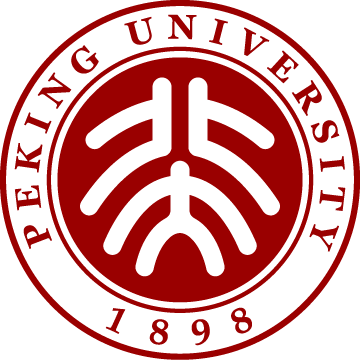ACS PUBLICATIONS SYMPOSIUM
Frontiers at the Chemistry and Biology Interface
IN PARTNERSHIP WITH PEKING UNIVERSITY
DATE
August 28-29, 2025
TIME
9:00 - 18:00 Bejing Time
TYPE
In-person event
LOCATION
Xiao Lun Auditorium (C 101), College of Chemistry and Molecular Engineering, Peking University
Beijing, China
北京大学化学与分子工程学院肖伦报告厅(C区101)
PARTNER
ACS Publications Symposium: Frontiers at the Chemistry and Biology Interface at Peking University
ACS Publications, in partnership with Peking University, is excited to announce their upcoming in-person symposium on Frontiers at the Chemistry and Biology Interface from August 28-29, 2025. The two-day event will be free to attend, and participants will have the opportunity to hear keynote lectures from world-renowned scientists working on chemical biology, synthetic biology, bioconjugate chemistry, biocatalysis, biomaterials and more!
Join us this summer in Beijing, China for two days of innovative, scientific exchange with leading experts and have the chance to present your own research through our poster sessions. Applicants who submit their abstracts will also have a chance to be chosen for Lightning Talks during the symposium programming.
Registration for ACS Publications Symposium: Frontiers at the Chemistry and Biology Interface has been closed as we've reached maximum capacity. We hope to see you at one of our future events!
JOURNAL PARTNERS
RELATED COLLECTIONS AND SPECIAL ISSUES
COLLECTION
Darwin Day 2025
This Collection celebrates one of the most influential figures in human history: Charles Darwin. The field of evolutionary biology has come a long way from observing the length of finches’ beaks and giraffes’ necks; contemporary researchers study antimicrobial resistance using CRISPR techniques, or wrangle TB-large datasets with Artificial Intelligence.
COLLECTION
Protein Design and Prediction
The 2024 Nobel Prize in Chemistry was awarded to David Baker “for computational protein design" and Demis Hassabis and John Jumper “for protein structure prediction.” One of the fundamental tenets of chemistry is that structure predicts function; the concepts and tools created by these Nobel Laureates have greatly amplified our ability to translate from sequence to meaningful biology.
COLLECTION
AI for Synthetic Biology
Synthetic biology is enabling scientists to tackle important societal problems, but is held back by our inability to predict biological systems as accurately as we predict and simulate physical or chemical ones. Artificial Intelligence and machine learning can improve this predictive power, and can be applied in all parts of the synthetic biology process. This Virtual Special Issue highlights topics benefiting from artificial intelligence and machine learning, along with state-of-the-art architectures already being explored in the domain.
VIRTUAL SPECIAL ISSUE
Synthetic Cells
Synthetic biology can help to untangle the fascinating mechanisms that drive biological complexity and harness biological components to build entirely new materials and devices. This Virtual Special Issue captures contributions that deconstruct as well as build up and mimic biological systems, including new tools to design cell-free systems, new methods to evaluate synthetic cells, new insights into biochemical reactions, cellular compartments, and biological processes, and more.
COLLECTION
Peptide Conjugation and Delivery
Peptide conjugation methodology has become crucial in the fields of drug delivery, vaccine development, and biotechnology. Bioconjugate Chemistry and Biomacromolecules here showcase the state of the art in peptide conjugation methodology. We continue to welcome research at the interface between peptide conjugation and polymer science, focused on improving biocompatibility, stability, and functionality of bioconjugates towards improving therapeutic applications.
SPECIAL ISSUE
Computational Methods in Drug Delivery
This joint special issue highlights the latest advancements in the field of drug delivery focusing on how computational methods are being utilized to overcome some of the most challenging obstacles. Drug delivery is constantly evolving, and computational methods have proven to be an invaluable tool. The outstanding work included in this special issue illustrates the energetic and innovative approaches by researchers working in this area.
Copyright © 2025 | American Chemical Society | 1155 Sixteenth Street NW | Washington, DC 20036













